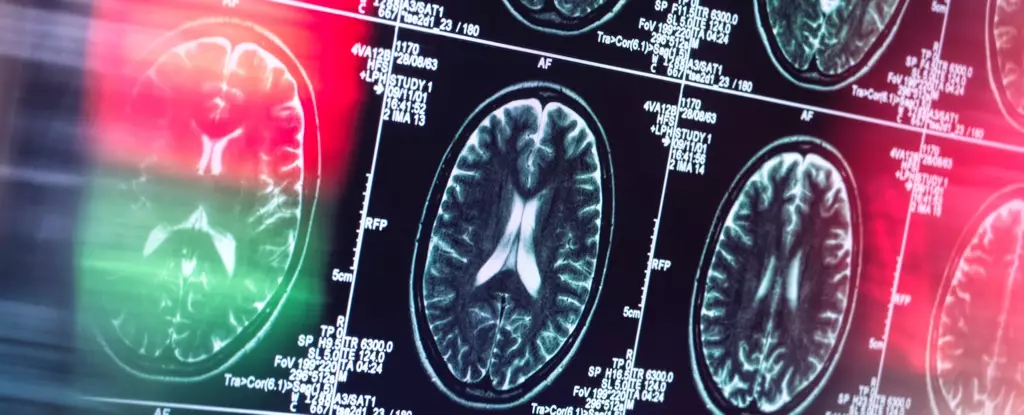Alzheimer’s disease, a progressive neurological disorder, is not only a challenge for the individuals it afflicts but also presents a formidable dilemma for the medical community at large. For decades, the focus of research has primarily centered on specific proteins within the brain, notably beta-amyloid. However, recent revelations and controversies surrounding the validity of foundational studies have sparked an urgent need to reassess the prevailing theories. This reassessment could pave the way for innovative treatment solutions, as we grapple with the alarming epidemic of dementia affecting millions globally.
In recent years, significant scrutiny has been placed on the body of research underpinning Alzheimer’s therapies. The situation has reached a tipping point, particularly after a troubling report from Science magazine in July 2022, which suggested that a landmark study from 2006 might have relied on historical data that could be fabricated. The consequences of such disclosures are profound, shaking the credibility of a field that has already faced repeated setbacks.
Moreover, the U.S. Food and Drug Administration’s controversial approval of aducanumab in June 2021 has ignited a heated debate among healthcare professionals. Critics argue that the decision was premature, based on incomplete and inconsistent evidence regarding the drug’s efficacy. Proponents maintain that a new avenue should be explored in the face of the urgency that accompanies Alzheimer’s. With millions seeking treatment options, reevaluating our understanding of the disease is not merely academic; it has real-world ramifications for a populace in dire need.
The time has arrived for a paradigm shift in how we conceptualize Alzheimer’s disease. As a renewed focus emerges from different research institutions, the notion of beta-amyloid as the sole villain is being challenged. At the forefront of this rethinking lies the intriguing hypothesis proposed by researchers at the Krembil Brain Institute. Rather than relegating Alzheimer’s to a distinct brain pathology defined purely by protein accumulation, the new perspective posits that it may represent an autoimmune disorder.
By examining the immune system’s role within the brain, we uncover the potential of beta-amyloid beyond its roles as a neurotoxin. Instead, beta-amyloid can be viewed as an active participant in the brain’s immune response to trauma and infection. This emerging model reveals a far more complex interaction between beta-amyloid and the health of brain cells, suggesting that the very processes intended to protect may inadvertently lead to cellular degeneration.
The immune system’s protective role morphs into an internal conflict when considering how beta-amyloid interacts with the body’s own brain cells. Due to structural similarities between bacterial membranes and those of neuronal cells, an ‘identity crisis’ occurs. In essence, beta-amyloid struggles to differentiate between harmful invaders and native cells, causing a defensive strike against the brain itself, which ultimately contributes to the devolution of cognitive functions—a cornerstone of Alzheimer’s pathology.
Though this understanding likens Alzheimer’s to other autoimmune diseases, it diverges significantly in therapeutic implications. Traditional autoimmunity treatments, such as steroid-based approaches, may not translate effectively in targeting Alzheimer’s. Here, the need for investigating alternate immunomodulatory pathways becomes paramount.
Simultaneously, a diverse array of emerging hypotheses is complementing this innovative view. Some researchers investigate mitochondria as cradles of energy within neurons, proposing that mitochondrial dysfunction significantly contributes to the onset of Alzheimer’s. Others examine the potential aftermath of microbial invasions, specifically oral bacteria’s roles in neurodegeneration. It is promising to recognize the multifactorial nature of Alzheimer’s, which underscores the necessity for varied research avenues.
The ongoing quest for solutions feels all the more pressing as we face staggering dementia statistics—over 50 million people currently affected, with a diagnosis occurring every three seconds. The human impact of these figures is devastating, not only robbing individuals of their memories but also impacting familial bonds and economic stability within healthcare systems.
As we confront the complexities of Alzheimer’s disease, it is clear that innovative thinking is indispensable. The exploration of Alzheimer’s as an autoimmune disorder is a critical initial step, but it is just one component of a broader strategy needed to unravel this multifaceted ailment. To offer genuine hope to those affected, advancing research and quality care must coincide with a profound reevaluation of our understanding of the disease mechanisms. The importance of fostering a multidisciplinary approach cannot be overstated; fresh ideas may provide the keys to unlocking much-needed treatments and interventions. In this rapidly evolving landscape of neuroscience, the proactive navigation of Alzheimer’s challenges could indeed illuminate a brighter future for millions around the globe.


Leave a Reply